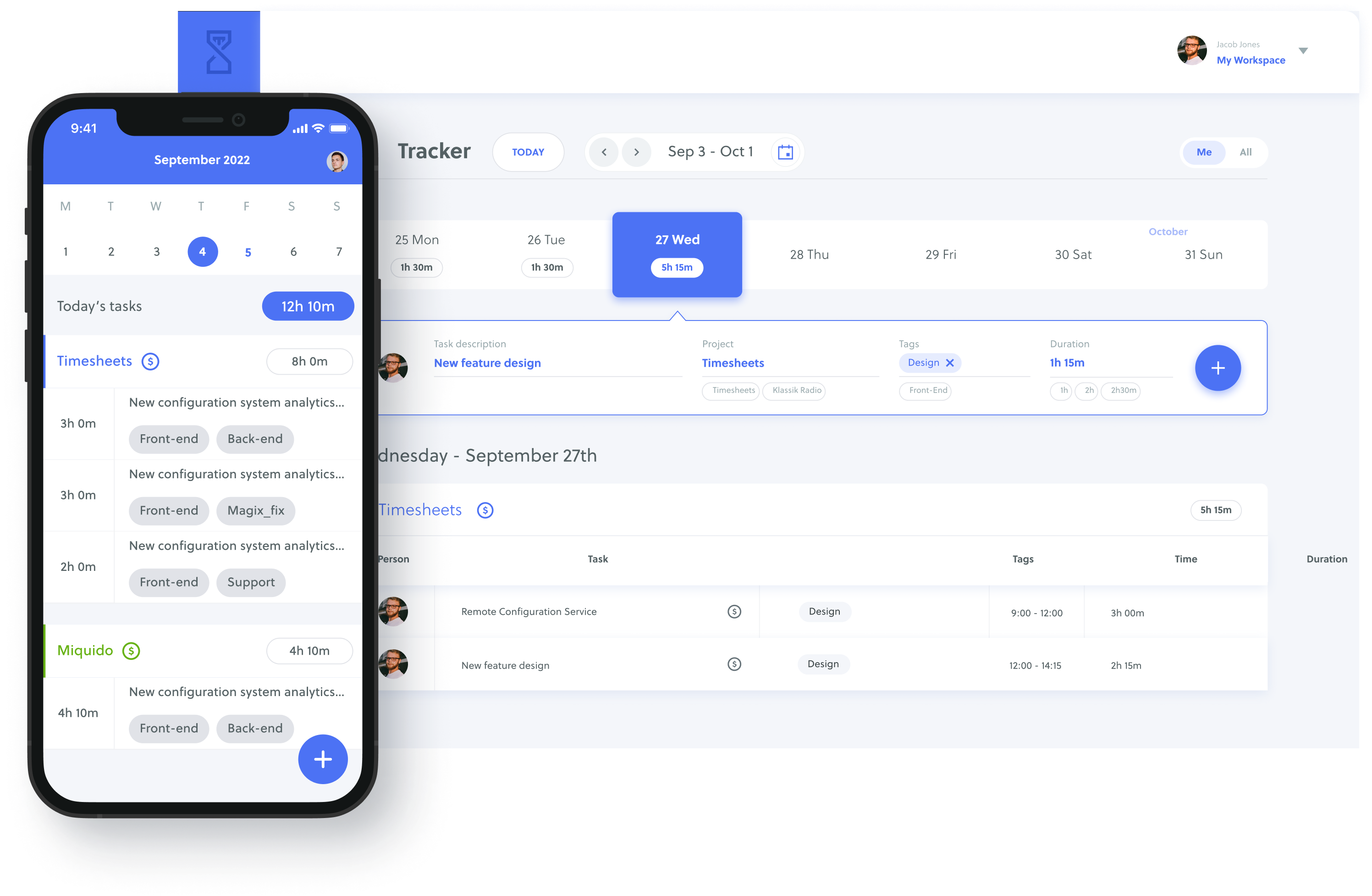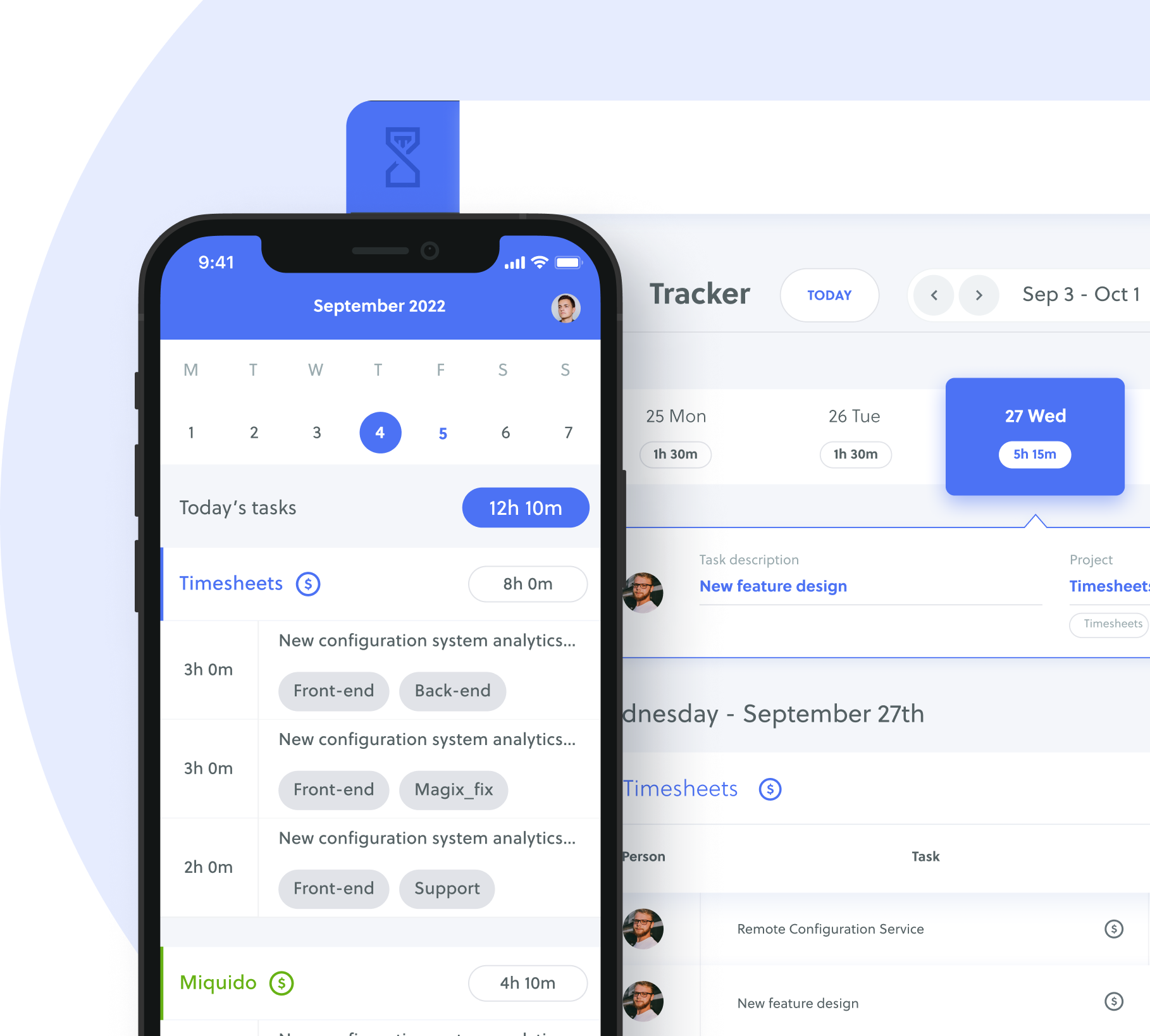As personal lives get busier than easier, employees with flexible work option can stay productive.
For decades, most Americans have worked 5 days a week, 9:00 AM to 5:00 PM, 48 to 50 weeks a year. However, more and more employees wish to enjoy a flexible work schedule.
Fortunately, most companies today adopt flextime systems because of their ease of management, low maintenance, and convenience. They have become highly in demand during the pandemic-induced-lockdowns when many businesses and organizations have to shift to flexible remote work.
Keep reading to get more familiar with flextime and determine whether it suits your organization or not.
Table of Contents
What is Flextime?
Flextime, also referred to as flexitime or flexible working, is an arrangement that allows employees to alter the starting and end time of their workday. They can still work a similar number of scheduled hours as they do under a traditional schedule.
With flextime, employees can integrate their personal lives and work more effectively under flexible conditions. The flexible daily schedule allows them to come to work, take lunch, or leave. This arrangement does not affect employees’ responsibilities, their total hours worked, and the goals to be achieved.
Employees can come and go as they wish in a flexible setting. On the other hand, many workplaces still set organizational core hours for operational purposes. Employees have to follow the designated time to be at work.
Core hours are the number of hours in a workday, and employees have to be available during those times, regardless of how different their schedules are. During core hours, employees can make decisions and discuss issues in real-time.
The company usually decides the core time depending on the employees’ operational needs, projects, locations, and roles.
Below is an example of a flextime policy:
- Flexible arrival at work: 7:00 AM to 10:00 AM
- Flexible lunch hours: 12:AM to 2:00 PM
- Flexible leave: 4:00 PM to 6:00 PM
- Core hours: 10:00 AM to 12:00 AM, 2:00 PM to 4:00 PM
Here are the different flextime arrangements:
Remote work
This flexible working arrangement allows employees to work from home or other locations outside the organization’s physical office, like a co-working space or coffee shop. Besides allowing employees to pick where they want to work from, remote working also gives them the freedom to work at their own pace.
Customized job sharing
Customized work hours give employees the liberty to choose their working hours. So, two employees can start or end their work at different times.
For instance, an employee can come into the office at 7:00 AM, while the other employees can do the same at 9:00 AM. On the other hand, they must consider the core time while covering the minimum flextime hours.
Job sharing
Job sharing allows two part-time workers to do their jobs in shifts to substitute the full-time employees. On the other hand, they have to communicate and coordinate with each other to deliver optimal productivity.
For instance, a customer service representative can work from 7:00 AM to 11:00 AM, while the other employee can take over the work from 12:00 AM to 4:00 PM.
Comp time
During busy, this flextime arrangement allows employees to work extra time. Instead of receiving overtime pay, employees can take time off on days with little work.
For instance, a customer service representative who takes extra hours handling customer complaints can take advantage of this flex time arrangement to work less later.
Flexible work week
With a flexible work week arrangement, employees can choose how they wish to accomplish their work within a week. They can take a long weekend off once they complete the minimum weekly hours.
For instance, if a web designer has completed all their work in three days, they can enjoy a day off and have a four-day weekend.
Why is it good to introduce Flextime?
The main reason for introducing flextime in a company so to keep key, dedicated employees who experience conflicts with traditional work hours.
Companies that offer flexible working options can gain increased worker satisfaction and productivity, as well as reduced turnover and absenteeism. As a result, they can save great amounts of money.
Flextime can create a more satisfying and happier workplace. Since their employers allow them to enjoy work-life time adjustments, they feel more motivated and work harder to rebalance their lives and hold on to their flexible schedule.
Who can benefit from Flextime and how to introduce Flextime?
Flextime can benefit employees, teams, and employers in several ways.
Employees can benefit from flextime schedules through:
Improved work-life balance
Traditionally, employees need to follow fixed start and end timings. So, they usually cannot attend to personal responsibilities during work hours.
However, with flextime schedules, they do not need to work 8 hours straight. They can perform personal tasks in between work hours. This helps boost employee satisfaction and work-life balance.
For instance, employees have the opportunity to plan a one-hour appointment with a doctor and then work an extra hour to cover the missed time. Working parents can start working early to take their children to a childcare facility. Employees can also schedule personal tasks before or after their core times.
The flexibility employees get from flextime schedules can increase their loyalty and morale. These employees tend to be engaged with the organization and put extra effort into their tasks when needed.
More opportunities for professional development
Flexible working gives employees more time to grow professionally. They can enroll in offline or online classes to advance their careers without missing work.
For example, remote workers in California can attend online classes streamed from Australia during working hours.
Besides professional development, flextime allows employees to work on their hobbies, personal lives, health, etc.
For instance, employees can play basketball or attend a yoga class or go to the gym after working for two hours in the morning without risking work hours.
Better health
With flextime, employees can encourage a safer working environment while staying healthy.
This work arrangement can limit the number of employees going to the office, which enables hybrid or remote work. In short, fewer employees will come to the office, reducing interactions and spreading diseases.
Additionally, employees will not experience burnout. They have the energy to stay productive and complete their tasks on time.
Here are the top reasons why it is good to introduce flexible working in a workspace for employers:
Fewer employee absences
Employees have a chance to apply for time off so that they can perform personal activities during working days in a flextime system. They can attend to their personal responsibilities, which helps reduce unplanned absences, absenteeism, and other attendance problems.
Boosts employee productivity
A 2021 Gartney Digital Worker Experience Survey reveals that 43 percent of employees have improved their productivity with a flextime work setup.
With flexible working, employees experience less burnout since they can manage their tasks and breaks flexibly and efficiently. They can take breaks whenever they feel distracted at work. They can also work for longer hours if they feel productive.
Would you like to increase employee productivity?
Start tracking time with Quidlo Timesheets. No commitment or credit card required.
Attracts more talent
Employees often seek companies that offer telecommunication and flexible working hours. In short, employers can attract more top talents by providing flexible working schedules.
For instance, skilled employees would prefer a job that allows a remote working setting over a job that requires them to come to the office. Why? They want to save travel expenses and prevent an exhausting commute.
Saves money
Since flextime work does not require the employees to come to the office every day, employers can save a lot of money. Employers can get a smaller workspace and purchase computers, tables, refreshments, etc., for team members that work from the office.
Moreover, flexible working can increase employee retention through improved job satisfaction. Companies can save money they would otherwise spend on hiring and training new team members.
While flexible working offers plenty of benefits to the employees and the business, its implementation can be challenging due to poor scheduling, lack of familiarity, etc.
If you want to make sure a smooth flextime implementation in the team, here are some helpful measures:
Clarify employees’ roles and responsibilities
Employees should know their roles and responsibilities. Each team member must know who is in charge of specific tasks or projects, whom they can apply for leaves, or to whom they should report. With clarity, they will not blame each other for problems.
Set clear objectives and goals
Since flexible working schedules do not involve regular working hours, some team members may find it challenging to track the work process.
This is why team members must regularly set clear project objectives/goals, work progress, deadlines, tasks, etc., with each other.
Establish communication guidelines
since there is no in-person communication, flextime employees often have weaker bonds with each other. In return, they tend to have low employee engagement and frequent misunderstandings.
So, employers must set guidelines about the frequency of online video calls, emails, meetings, and other methods of communication. They can bring employees together in a weekly video conference or an in-person meeting once every month, depending on their work situation.
Create core employee hours
It is critical to collect data about employees‘ flexible working arrangements, including the time they are unavailable. Employers can build core hours according to the data collected. They can also plan necessary tasks more effectively.
For instance, if employees work at different hours but are available from 1:30 Pm to 4:00 PM every day, you can set the core hours within this timeframe.
Similarly, let’s say you want to adapt to the comp time policy. You can limit the start and time timings. If not, employees can start their work at odd times, which disrupts their productivity.
What are the obstacles of introducing Flextime?
Although flexible work scheduling comes with significant advantages, employers may also encounter obstacles when introducing it, including:
Not suitable for all employee roles
Several employee roles are not suitable for flextime work. For example, client- or customer-facing positions usually require employees to keep a consistent work schedule. Hotels rely on receptionists to greet and assist guests, so they must stick to consistent hours.
Lack of accountability
In many cases, flextime scheduling systems allow employees to choose a schedule that works best for them. However, supervisors and managers may find it difficult to determine whether or not employees meet the required work hours since they arrive and leave at different times.
Security and liability concerns
Some employees who are in the office later or earlier than others tend to work in a near-empty or empty workspace. This can present liability issues for the employers where accidents may occur, and no one is there to assist the employees.
What are the tools that help in flexible working?
Here are some tools that support flexible working:
Time-tracking software
This software is critical to flextime to ensure accurate payroll. Managers can make sure that only hours worked are paid through approval process integration.
👉 Read also about 10 Best Time Tracking Apps For iPhone
Scheduling software
Some workers who follow flexible schedules still need to work during core hours. They may also need to submit their weekly or monthly schedules. With the scheduling software, employees are alerted regarding the time they are required to work.
HR system
With the HR system, flextime employees can access human resources information anytime and remotely. This tool provides them with work and personal data, view public information, sign new documents or policies, and updates their information.
Calendar software
This software is beneficial for employees working on flexible hours as it helps simplify the process of scheduling meetings. They can enter their availability in this tool.
Collaboration tools
Employees can utilize collaboration tools to communicate, which helps them to catch up on conversations later more easily. These tools help them stay updated on the progress or issues of a particular task or project.
Video conferencing apps
These apps allow meeting recording. That way, absent employees can watch and review it later. They can benefit workers working at flexible times since some schedules do not alight for company-wide meetings and other gatherings.
Final words
Flextime has different benefits, including reduced absenteeism, improved productivity, and increased employee satisfaction. On the other hand, an organization’s flexible work arrangements must be well-planned and implemented to prevent issues.







